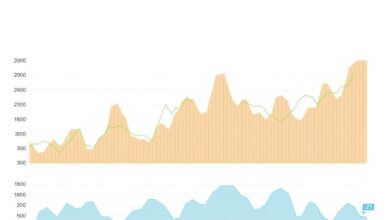How to use sinking funds to stay out of debt

Establish a clear strategy to allocate a portion of your income towards specific future expenses. This proactive approach allows you to set aside money gradually, ensuring that when the time comes for significant purchases or obligations, you’re financially prepared.
Instead of relying on credit, focus on creating designated savings pools for anticipated costs–like home repairs, vacations, or major purchases. By determining your financial objectives and breaking them down into manageable contributions each month, you’ll cultivate a habit of disciplined saving while steering clear of unnecessary liabilities.
This method not only enhances your ability to meet financial targets but also promotes smart finance practices. By prioritizing savings in alignment with your goals, you foster a stable financial foundation that supports both current needs and future aspirations.
What is a Sinking Fund?
A sinking reserve is a strategic financial tool designed to accumulate resources over time for specific objectives. This approach allows individuals and organizations to manage large expenses without resorting to borrowing. Here’s how it functions:
- Goal Setting: Identify the purpose for which you are saving, whether it’s for an upcoming vacation, home renovation, or future investments.
- Regular Contributions: Establish a routine of setting aside a fixed amount periodically. This could be weekly, monthly, or quarterly, depending on your planning preferences.
- Dedicated Account: Maintain a separate account specifically for these contributions. This prevents temptation and keeps your finances organized.
- Monitor Progress: Regularly review your balance to ensure you are on track towards achieving your goals. Adjust contributions as necessary based on changing needs or financial situations.
This method not only promotes disciplined saving but also enhances overall financial health by minimizing reliance on credit options. By prioritizing smart finance practices through effective planning, one can achieve targeted aspirations with confidence.
Setting Up Your Fund
Determine your objectives clearly. Identify specific targets, such as a vacation or major purchase, and estimate the total cost of each goal. This clarity will guide your budgeting process.
Establish a timeline for achieving these objectives. Knowing when you want to reach each target helps in calculating how much to set aside regularly. For example, if you aim to save $1,200 for a trip in one year, you need to allocate $100 monthly.
Select an appropriate savings vehicle that aligns with your goals. High-yield savings accounts or money market accounts can offer better interest rates than traditional options while keeping your funds accessible.
Create a detailed budget that incorporates these contributions. Ensure that your monthly expenses allow room for these allocations without compromising essential living costs.
Automate transfers to streamline the process. Setting up direct deposits or scheduled transfers ensures consistent contributions without the temptation to spend those amounts elsewhere.
Regularly review and adjust your progress towards these targets. Periodic assessments help identify areas where you might need to increase contributions or recalibrate timelines based on changing circumstances.
Determining Contribution Amounts
Establish a clear goal for your target amount, whether it’s for a specific purchase or an emergency reserve. Divide this total by the number of months until you plan to make the expenditure. This calculation will provide a monthly contribution figure that aligns with your financial objectives.
Assess your current budget to determine how much you can realistically allocate each month without compromising essential expenses. Prioritize contributions as part of your financial strategy, treating them like any regular bill.
Consider potential interest or return on investment if your contributions are placed in an interest-bearing account. Factor this into your calculations to adjust your monthly contributions accordingly, potentially reducing the amount needed from your personal finances.
Monitor and adjust contributions based on changing circumstances or unexpected expenses. If you receive a bonus or additional income, consider increasing that month’s allocation to accelerate progress toward your goal.
Regularly review and update your plan to ensure it remains aligned with both short-term and long-term aspirations. Smart finance involves adapting strategies as life changes, ensuring consistent growth in savings while maintaining flexibility in budgeting.
Tracking Your Progress
Establish a system to monitor your contributions and the growth of your reserves. Use budgeting software or a simple spreadsheet to record deposits regularly, which allows for real-time updates on your financial health.
Set specific milestones to achieve throughout the year. For instance, if you aim to accumulate $1,200 for an annual expense, break it down into monthly targets of $100. This method not only clarifies your goals but also provides motivation as you reach each checkpoint.
Review your performance quarterly. Analyze how well you’re adhering to your planned contributions and adjust if necessary. Consider factors such as unexpected expenses or income changes that may impact your ability to meet targets.
Celebrate small victories. Acknowledging progress enhances motivation and reinforces positive behaviors towards smart finance practices. Whether it’s a simple treat or a night out, rewarding yourself can keep enthusiasm high.
Finally, share your goals with a trusted friend or family member who can help hold you accountable. Discussing achievements fosters a supportive environment that encourages disciplined planning and effective savings strategies.
Common Mistakes to Avoid
Aim for a clear strategy; vague objectives lead to financial pitfalls. Establish specific targets, like saving for a vacation or car repairs, rather than ambiguous plans. This clarity enhances motivation and accountability.
Neglecting regular assessments can derail progress. Schedule monthly reviews of your financial status to adjust contributions and ensure alignment with your evolving aspirations. Consistent tracking keeps you on the path toward your goals.
Overestimating potential returns is a common error. Set realistic expectations based on historical data rather than optimistic projections. This approach reduces disappointment and encourages sustainable planning.
Failing to prioritize multiple savings goals can create confusion. Create a hierarchy of your objectives, focusing first on urgent needs before allocating resources to long-term ambitions. This method streamlines budgeting and maximizes effectiveness.
Relying solely on one income source poses risks. Diversify your earnings through side gigs or investments that align with your skills and interests. This not only boosts financial security but also accelerates goal achievement.
Inconsistent contribution habits hinder growth. Automate transfers to designated accounts to instill discipline in your saving routine. Regular deposits cultivate an efficient approach to managing finances over time.
Ignoring inflation can erode purchasing power, so factor it into financial calculations. Adjust targets periodically to reflect changes in living costs, ensuring that accumulated resources maintain their value.
Lastly, avoid emotional spending during challenging times; instead, lean on established support systems or revisit your budget plan. Emotional intelligence in finance fosters resilience and enhances decision-making capabilities.







